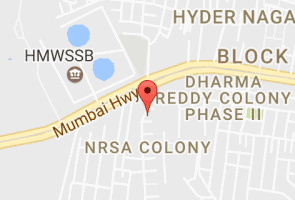IBD and Ayurvedic Treatment
Ulcerative colitis and Crohn’s disease are the two most severe digestive problems, which are classified under the medical rubric of inflammatory bowl disease. Ulcerative colitis is an inflammation of the lining of the large intestine. Crohn’s disease usually occurs in the lower portion of the small intestine, but may occur anywhere in the digestive tract. Tens of thousands of Indians are affected by these disorders and the incidence of IBD has been on the rise over the years. The disease is called kshatodara in Ayurveda.
Causes
Although the causes of inflammatory bowel disease are not yet known, genetic factors do play some role. Up to 25 per cent of people with IBD have family members suffering with the disease. Some researchers believe that the disease develops in people who have a genetic susceptibility that enables virus or bacteria to trigger an abnormal immune response.
Different bacteria may be responsible for either Crohn’s disease or ulcerative colitis. Viral infections during pregnancy may also increase the child’s risk of being inflicted by IBD. It is being suspected that the tuberculosis-causing organism also causes Crohn’s disease.
Experts believe that environmental factors and diet also play an important role. It was found during recent studies that high fat intake, particularly animal fat, was associated with development of ulcerative colitis. There was a relation between high sugar intake (from non-fruit sources) and inflammatory bowel disease. A high intake, on the other hand, of fluids and diets rich in fruits, vegetables, potassium, vitamin C, and magnesium, were associated with a lower risk for both disorders. The severity of symptoms and flare-up rates vary with seasons, with the risk being highest in winter and lowest in autumn and summer.
Symptoms
- l The most common symptom of IBD is diarrhoea.
- Constipation may develop during active flare-ups of IBD.
- Cramps can occur from intestinal contractions caused by inflammation.
- Eating becomes associated with fear of abdominal pain.
- There could also be loss of weight, pain in the joints, inflammation in the eyes, ulcerated skin, fistulas, abscesses and fever.
Guidelines & ayurvedic remedies
- Eat small, frequent meals and avoid overeating. Drink plenty of buttermilk and fluids that are fully nutritional.
- Condiments, spices, seasoning or sauces of any kind should be avoided. Be careful while eating meat, fish, eggs, as these are the most putrefactive of all, are prone to affect the colon and irritate and rekindle inflammation.
- White sugar, green gram (mung dal) and all white flour products are also extremely harmful.
- Foods which have detoxifying and cleansing effect upon the intestines—such as fruits, vegetables and curds, should form an essential part of your diet. It is possible that patients suffering from colitis will be unable to take fruits and salads right away. To begin with, bland food will help. But once the inflammation subsides, foods containing roughage should be added in moderation.
- Some people with IBD have food allergies and have been reported to do better when they avoid foods they are allergic to.
- Rest is important as strain can further aggravate the problem. Relax after each meal and ensure that you sleep well.
- Crohn’s disease often leads to mal-absorption. As a result, the patient often has inadequate levels of nutrient elements common being zinc, vitamins and iron. Hence it is advisable to use Yasad bhasma and Loha bhasma on your doctors advise.
- Take the powder of bael fruit with equal quantity of jaggery, three times a day.
- Paste of banyan shoots helps a lot. Three to six grams is to be taken with rice water, thrice daily.
- Mix powders of naagakesar, chandan (sandalwood), crystal-sugar and honey in equal parts and add it to enough quantity of butter. Take 10 to 15 grams of this preparation thrice a day.
- Decoction prepared from equal parts of fruit bark of pomegranate and bark of Holarrhena antidysenterica (kuda/Kodisapaala), is to be taken in doses of three to four teaspoonfuls with a spoonful of honey, twice a day.
- During recent studies, several ayurvedic plants were studied for their therapeutic effect on IBD. One study has been done using the gum resin of Boswellia serrata, an Ayurvedic herb. Administration of Boswellia (350 mg thrice daily for six weeks) was found to be as effective as the drug sulfasalazine. Other plants that have given positive results include Licorice (Glycyrrhiza glabra) and Aloe.
- In extreme cases of IBD, specific ayurvedic procedure like Anuvaasana vasti (oil enemas with ulcer-healing herbs) and compound preparations such as Kutajaghan vati have proved to be beneficial.
Note
As we all are genetically different with different constitutions and patterns, we respond to treatments in many different ways. Hence Standard Ayurvedic Treatments are always individually formulated. This article is intended only for information. It is not a substitute to the standard medical diagnosis, personalized Ayurvedic treatment or qualified Ayurvedic physician. For specific treatment, always consult with a qualified Ayurvedic physician.
ADDRESS
Dr. Murali Manohar Chirumamilla, M.D.
(Ayurveda)
RAKSHA AYURVEDALAYA
Plot No. 13, H.No: 16-2-67/13,
Ramamurthy Nagar (CBCID Colony),
Hydernagar,
Landmark: Kukatpally Area, Metro Train Pillar No. MYP 29.
HYDERABAD.
PIN - 500 085. Telangana State
INDIA
CONTACT DETAILS
Mobiles: +91 (0) 9246575510, 9177445454
E-mail: muralimanohar2008@gmail.com
Web site: http://www.muralimanohar.com
Timings:9.30 a.m. to 7 p.m. Sunday 8 a.m. to 2 p.m
LOCATION MAP

